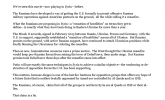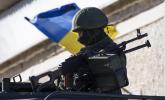Interactive Map and Assessment: Verified Ukrainian Partisan Attacks against Russian Occupation Forces
November 1, 2022 - ISW Press
Effective Ukrainian partisan attacks are forcing the Kremlin to divert resources away from frontline operations to help secure rear areas, degrading Russia’s ability to defend against ongoing Ukrainian counteroffensives, let alone conduct their own offensive operations. Poor Russian operational security has enabled Ukrainian partisan attacks. Russia’s increasing manpower shortages are likely degrading Russian forces’ ability to effectively secure Russian rear areas against partisan attacks and simultaneously defend against Ukrainian counteroffensives. The Kremlin still has not effectively countered Ukraine’s organized partisan movement and is unlikely to have the capabilities to do so.










